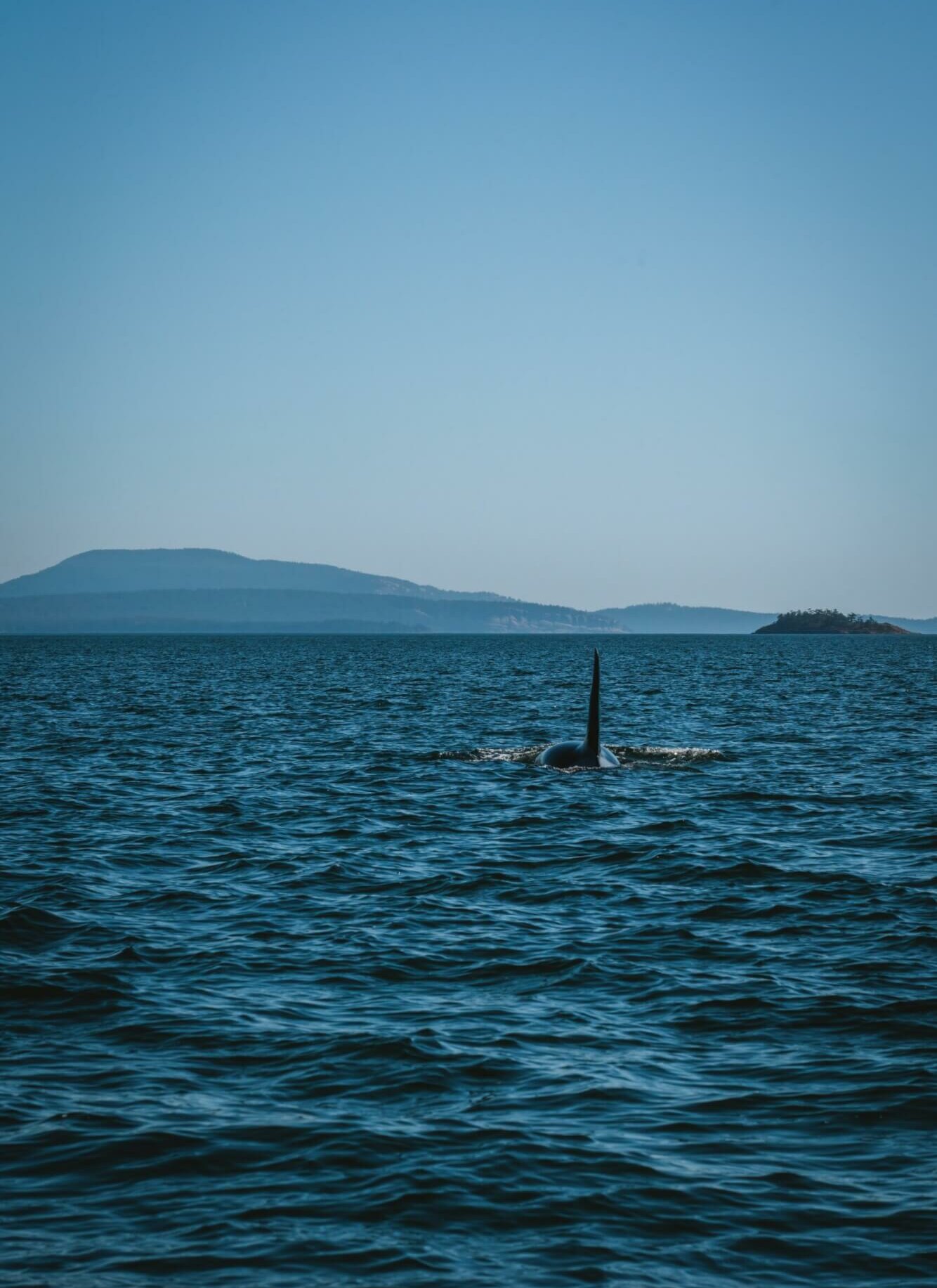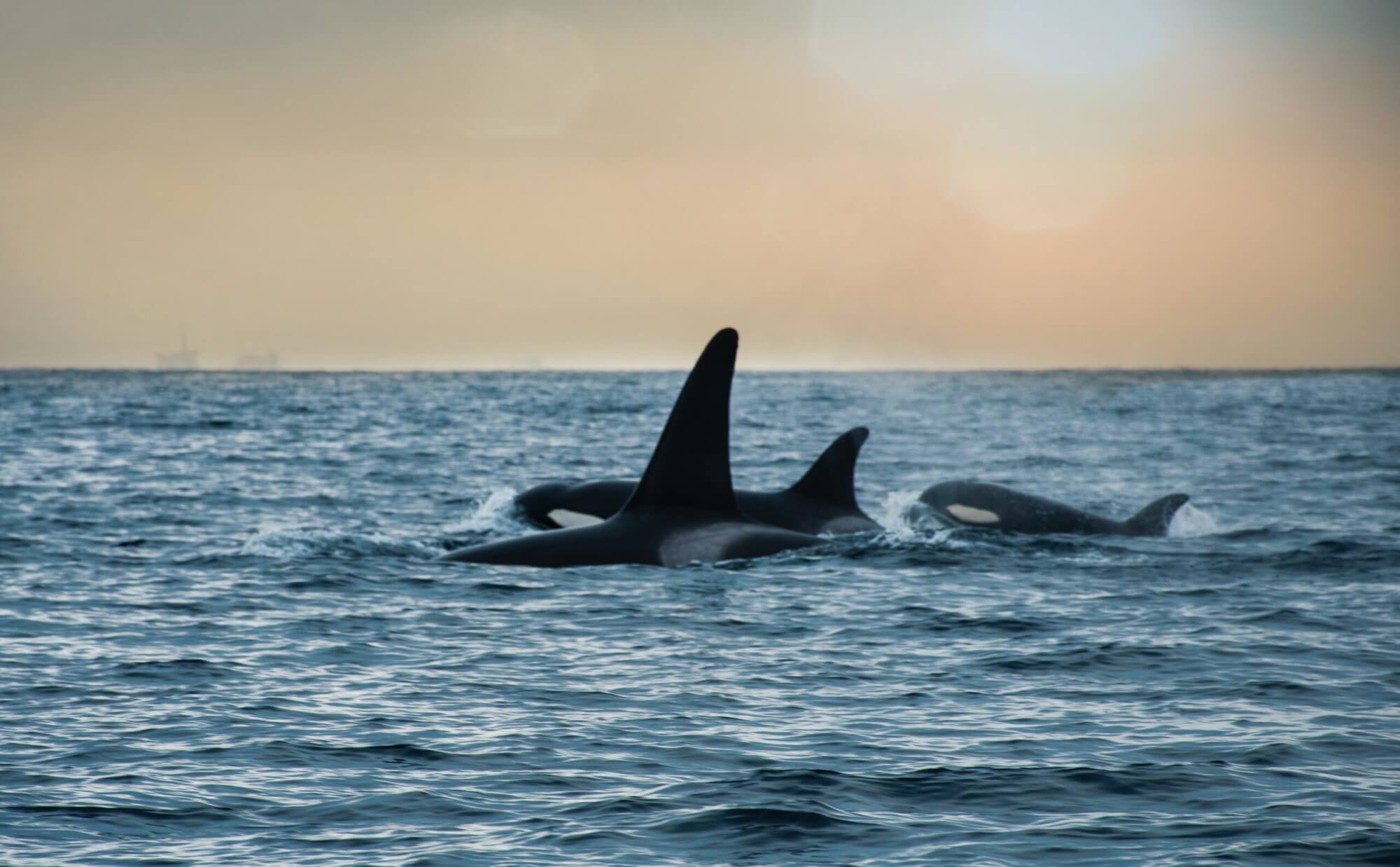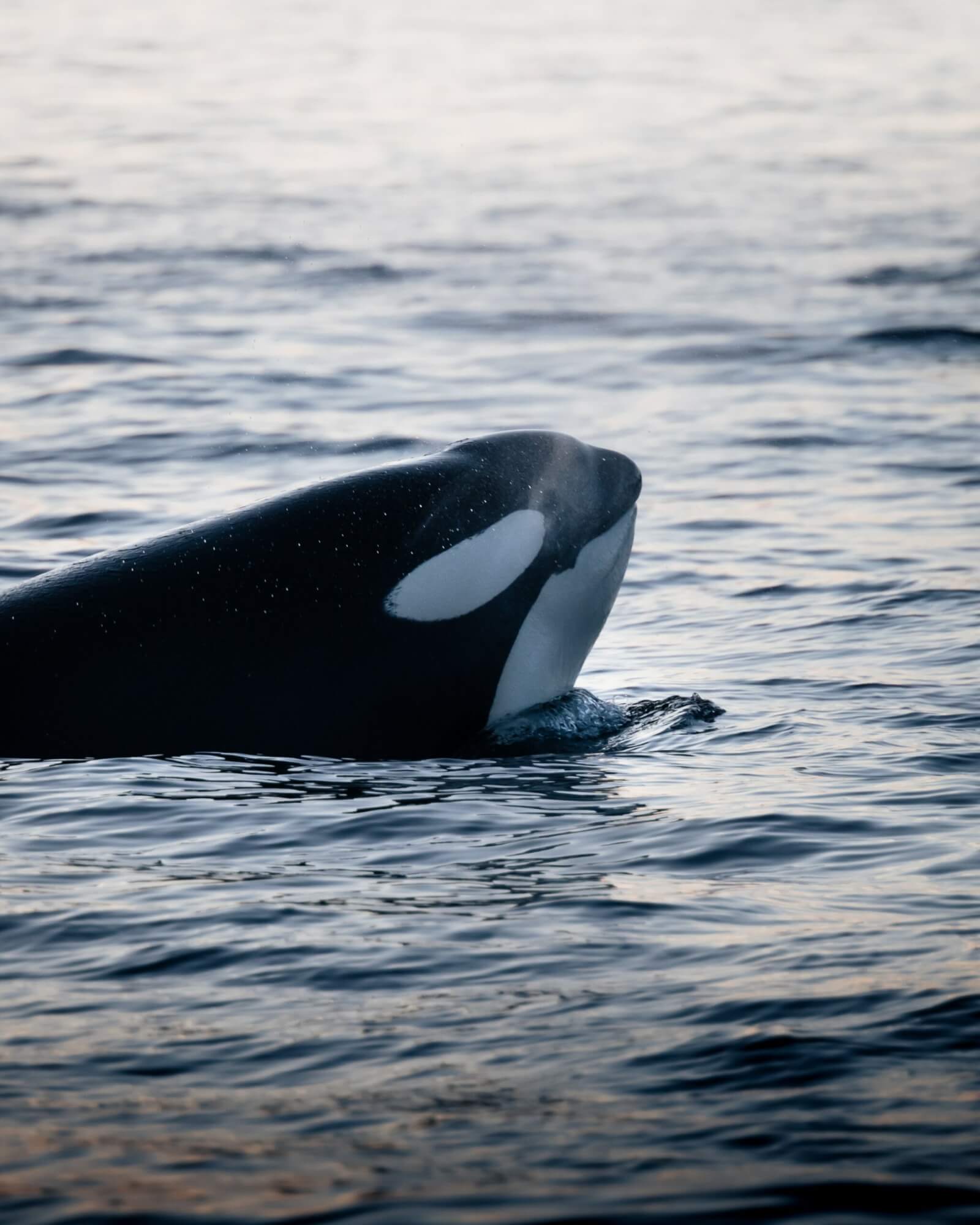Male advantage
The killer whales of this community live within a complex social organization. This is characterized by matrilineal social units, which bring together all the descendants of the same female. It is this female (normally the oldest) who leads the group. Her knowledge is of tremendous value to her family, as her familiarity with the surrounding habitat and environment make her an experienced reference when it comes to foraging. However, males and females do not benefit from associating with their mothers in the same way. Indeed, the male enjoys maternal investment throughout his life, which takes the form of food sharing between the two individuals. This long-term commitment is not without consequences for the mother, who may experience a decline in her reproductive success.
The mechanisms that explain these negative repercussions on reproduction are not yet known. However, we do know that the nutritional status of females as well as prey availability have a significant impact on reproductive success in this community. Sharing of prey by the female with her male offspring might therefore reduce her own energy intake, thereby limiting the energy she is able to reinvest in reproduction.
Another definition of success
But what benefits does this behaviour provide? To find part of the answer, we must shift our focus to the males. All this energy invested by the mother in the nutrition of her male offspring is intended to increase the latter’s chances of survival, and in turn his reproductive success. The female benefits from this association through an indirect increase in her own reproductive success, as her genetic material is transmitted through her male offspring and the latter’s descendants.
This answer is not entirely satisfactory, however, as young females also pass on their mother’s genes to the next generation.
For a better understanding, we must examine the structure of the family unit and how killer whales reproduce. Males normally breed with females from other matrilineal units, which is where their offspring will later be raised. On the other hand, younger females raise their young in the same unit as their mothers, meaning they may enter into competition with the matriarch’s offspring for resources. According to scientists, this competition within the same group likely encourages females to promote more heavily the reproduction of their male offspring, whose descendants will grow up in another group.
Southern resident killer whales
The southern resident killer whale community frequents the coastal waters and open ocean of the Northeast Pacific, its range stretching from the southeastern coast of Alaska to California. Its favourite haunts are the waters of British Columbia as well as those of the US states of Oregon and Washington. This small community, estimated at 200 individuals at the dawn of the 20th century, now numbers no more than 75 animals and is classified as endangered in both Canada and the United States. Despite the ban on whaling and capturing these animals for the entertainment industry, both of which went unchecked for many years, the community is struggling to recover.
Low birth rates and increased mortality have been associated with the degraded state of several populations of Chinook salmon, a wild salmon of the Pacific that forms the basis of the diet of this killer whale population. This absence of salmon is believed to be causing malnutrition in southern resident killer whales, in addition to affecting their growth and reproductive success. What’s more, persistent organic pollutants as well as disturbance caused by the presence of boats and the noise they generate are all threats that are believed to be hindering the species’ recovery. Extremely low birth rates are also alarming. A mere 17 births were recorded between 2012 and 2020, with a peak of 7 in 2015. However, six of these calves died or were never seen again. Reproductive success is also down, as nearly 70% of pregnant females identified between 2008 and 2014 did not carry their pregnancies to term.
The authors of the study suggest that, over the long term, the reproductive cost of maternal investment could add to the multiple factors hampering the recovery of the population by affecting birth rates in this community. In any case, current protection measures appear to be insufficient to protect the southern resident killer whale. Will we be able to give them a better chance?
Learn more
- (2023) Weiss, M. N., Ellis, S., Franks, D. W., Kronborg Nielsen, M. L., Cant, M. A., Johnstone, R. A., Ellifrit, D. K., Balcomb III, K. C., Croft, D. P. Costly lifetime maternal investment in killer whales. Current Biology 33: 744-748








